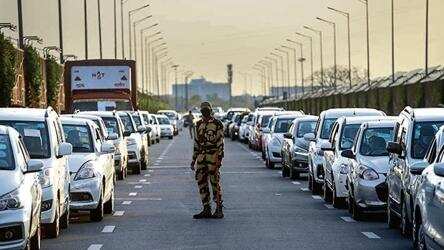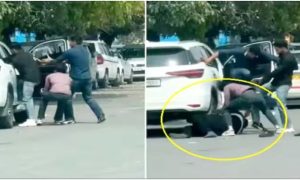On Sunday, the person coordinating the White House’s coronavirus task force, Dr Deborah L Birx, said the number of deaths in the US from Covid-19 could rise as high as 200,000, with the most likely number between 80,000 and 160,000 .
On Monday morning, the US had approximately one out of every five cases of Covid-19 around the world. With the latest number of deaths in the US at 2,650, the news from the US is dire — it suggests things are going to get worse, far worse, before they get better.
It also suggests that many other states and cities in the US will go through the same crisis New York state and NYC are facing right now. There were 776 deaths in New York City alone as of Monday morning.
On March 11, the US had 1,301 cases. The trajectory of the disease in the US is one reason why India’s lockdown is critical. It’s also the reason Indians have to take the lockdown seriously. State governments have to ensure that the migrant workers within their borders stay put; not the easiest thing to do.
People should not venture out unless it’s completely necessary to — on Monday, reports from Mumbai suggested that many people on the road had no reason to be out, and the traffic in Delhi was more than it has been on other days of the lockdown .
Cabinet secretary Rajiv Gauba said on Monday that there are no plans to extend the lockdown beyond April 15. India should keep an open mind about this. As research reported by this newsroom has pointed out, a hard lockdown does flatten the curve of infections.
India’s health ministry has said that there could be limited community transmission in India. In a standard operating procedure (SOP) document, the ministry referred to the “current phase of Covid-19 pandemic in India” and explained this, within parenthesis as “local transmission and limited community transmission”. On Monday, at its customary 4pm briefing, the health ministry sought to downplay this by seeking to establish a difference between the “limited community transmission” mentioned in the document and community transmission as it is generally defined.
There have been some cases in India where the source of infection has not been established, which the health ministry has consistently attributed to the failure of contact-tracing rather than community transmission. By definition, the inability to contact-trace is community transmission. The good news for India (so far) is that the numbers are still small.
There are two possible explanations for this: India was quick to put restrictions on travel and travellers and eventually instituted a hard lockdown for 21-days starting March 25, and these have helped; or the lack of widespread testing in the country has ensured that we are not seeing the real picture. Which is why the next two weeks of the lockdown are important. Widespread community transmission, if it has happened, should start showing up in the numbers. If it doesn’t – and it is this writer’s fervent hope that it doesn’t – then it will mean that the restrictions and the lockdowns have worked.
Sure, that will mean the country should prepare for the so-called second wave of infections that typically happen when a lockdown ends and travel restarts, but this is a preferable scenario to just about anything else. Which is also why India needs to test more. Testing patterns across states and union territories shows a huge diversion. Everyone needs to test more.
At 10.30pm on Monday, the number of Covid-19 infections in India was 1,320, having risen by over 181, over 100 for the fourth day in a row.



































